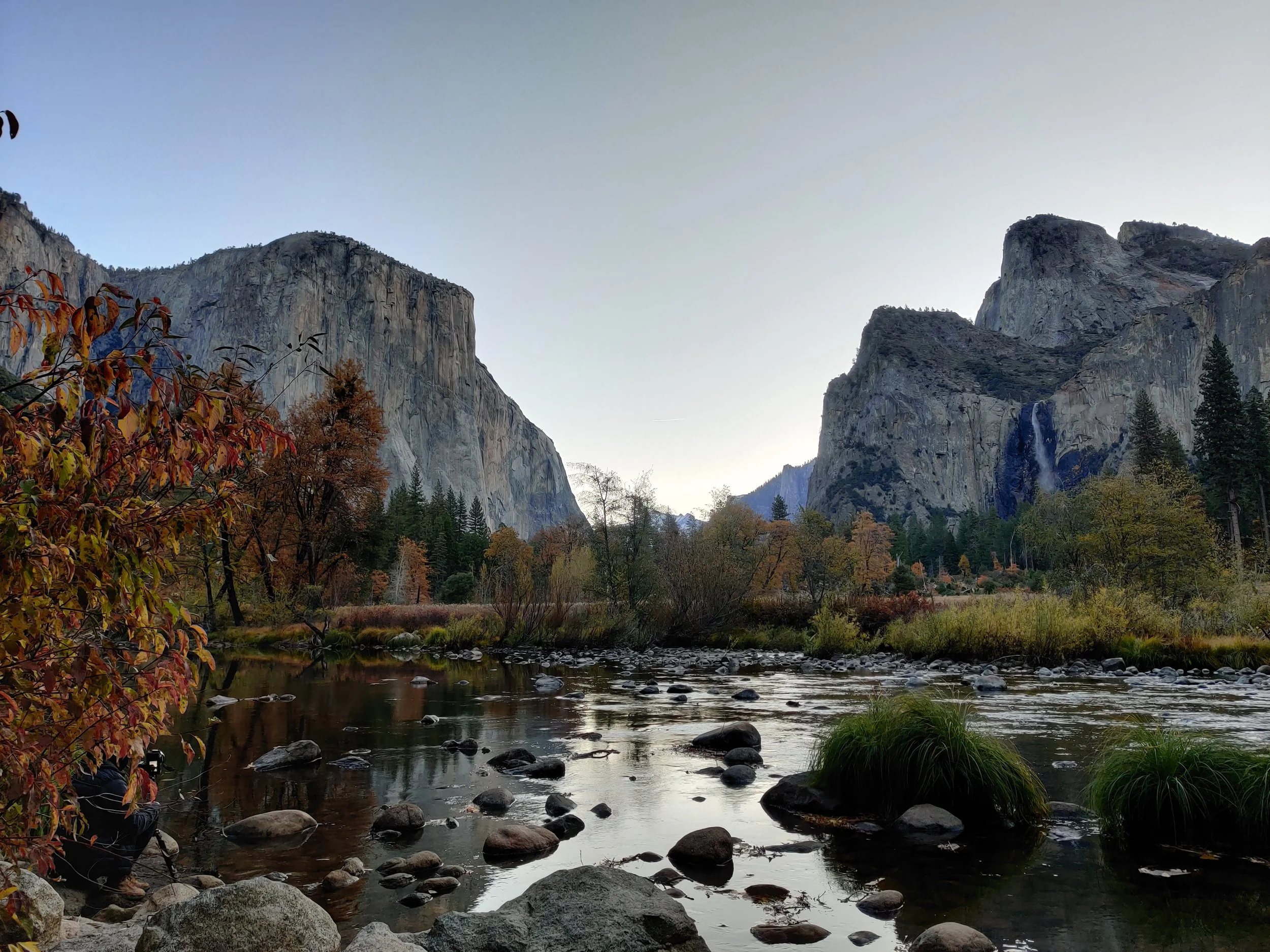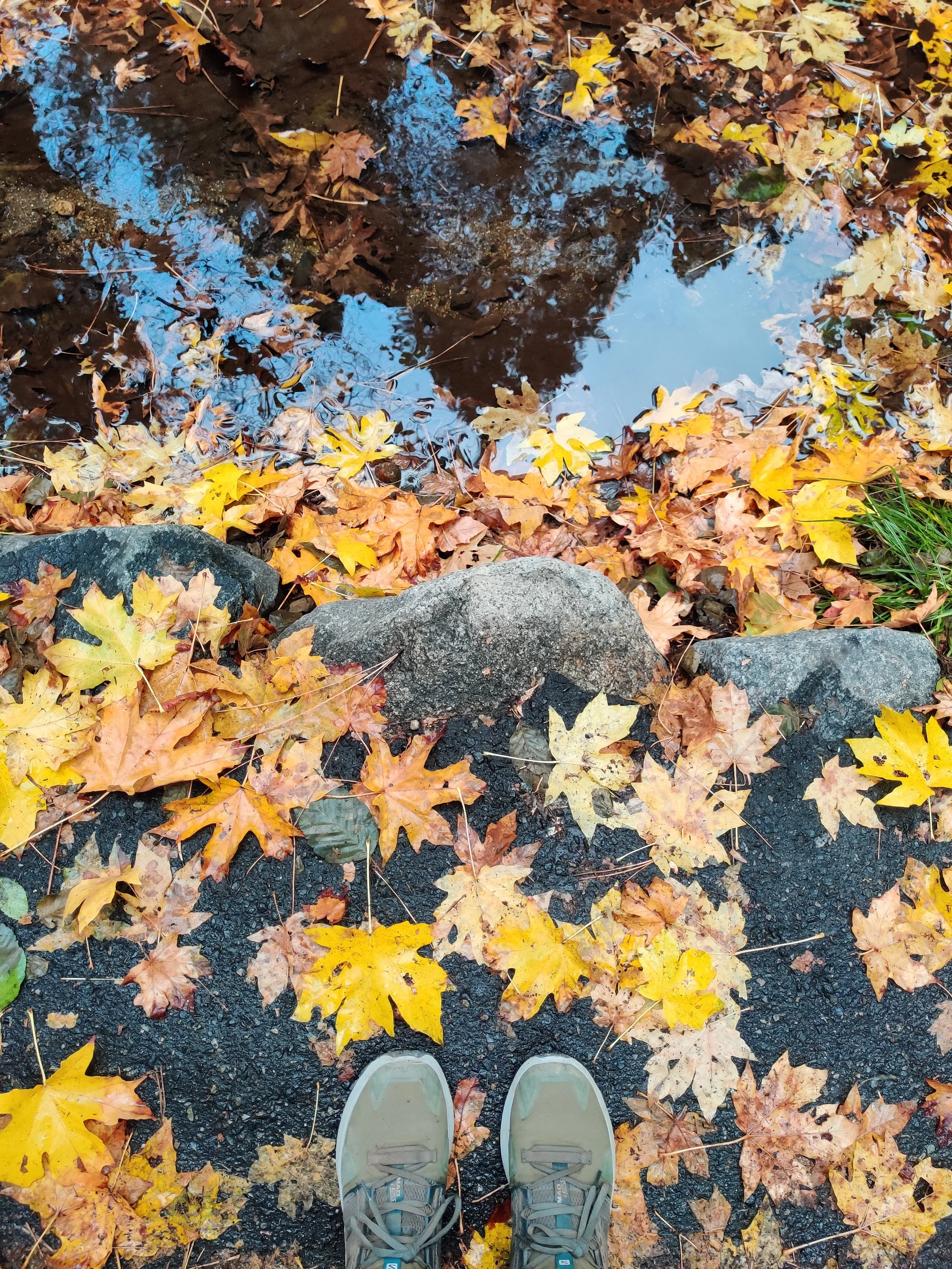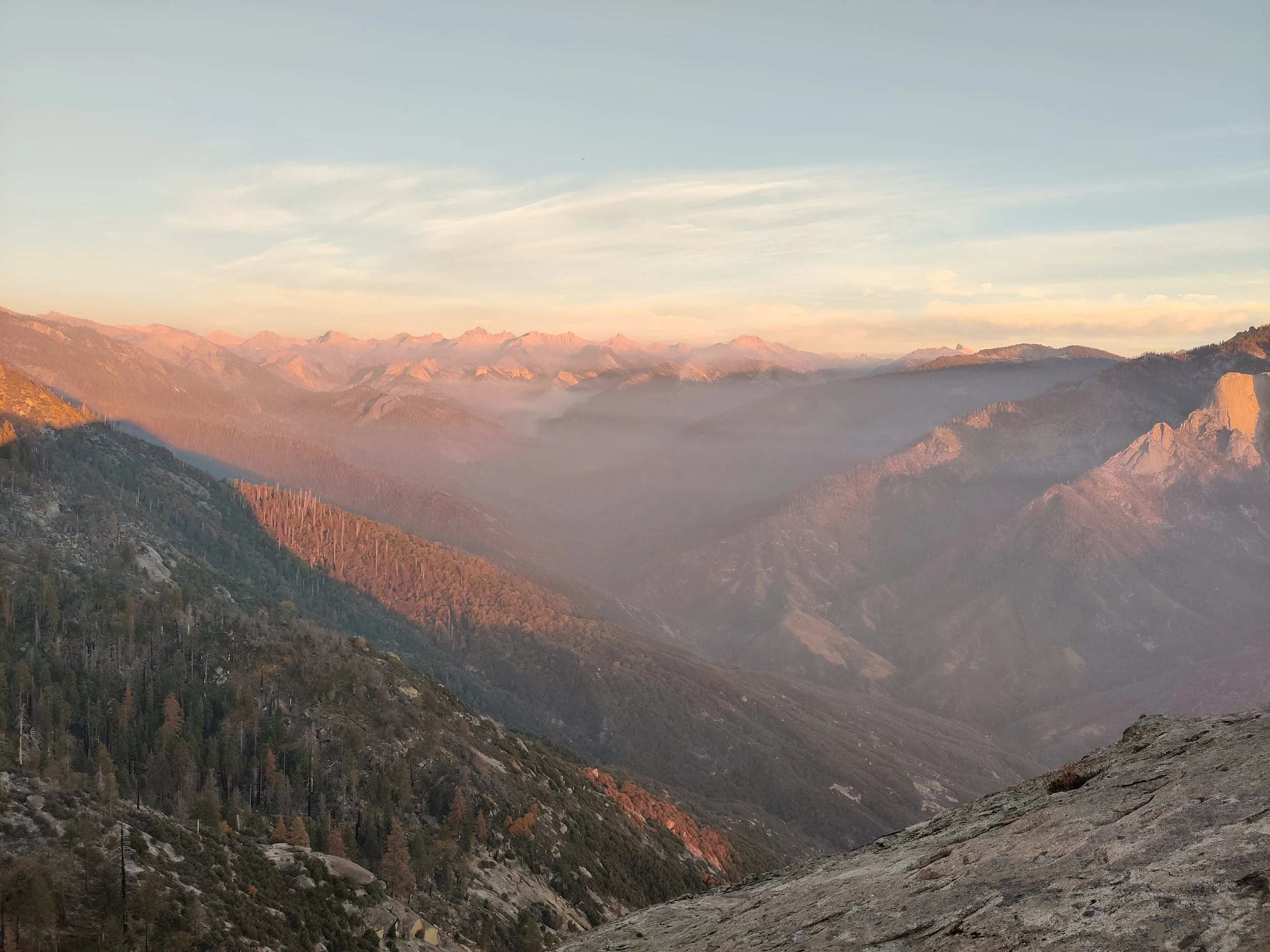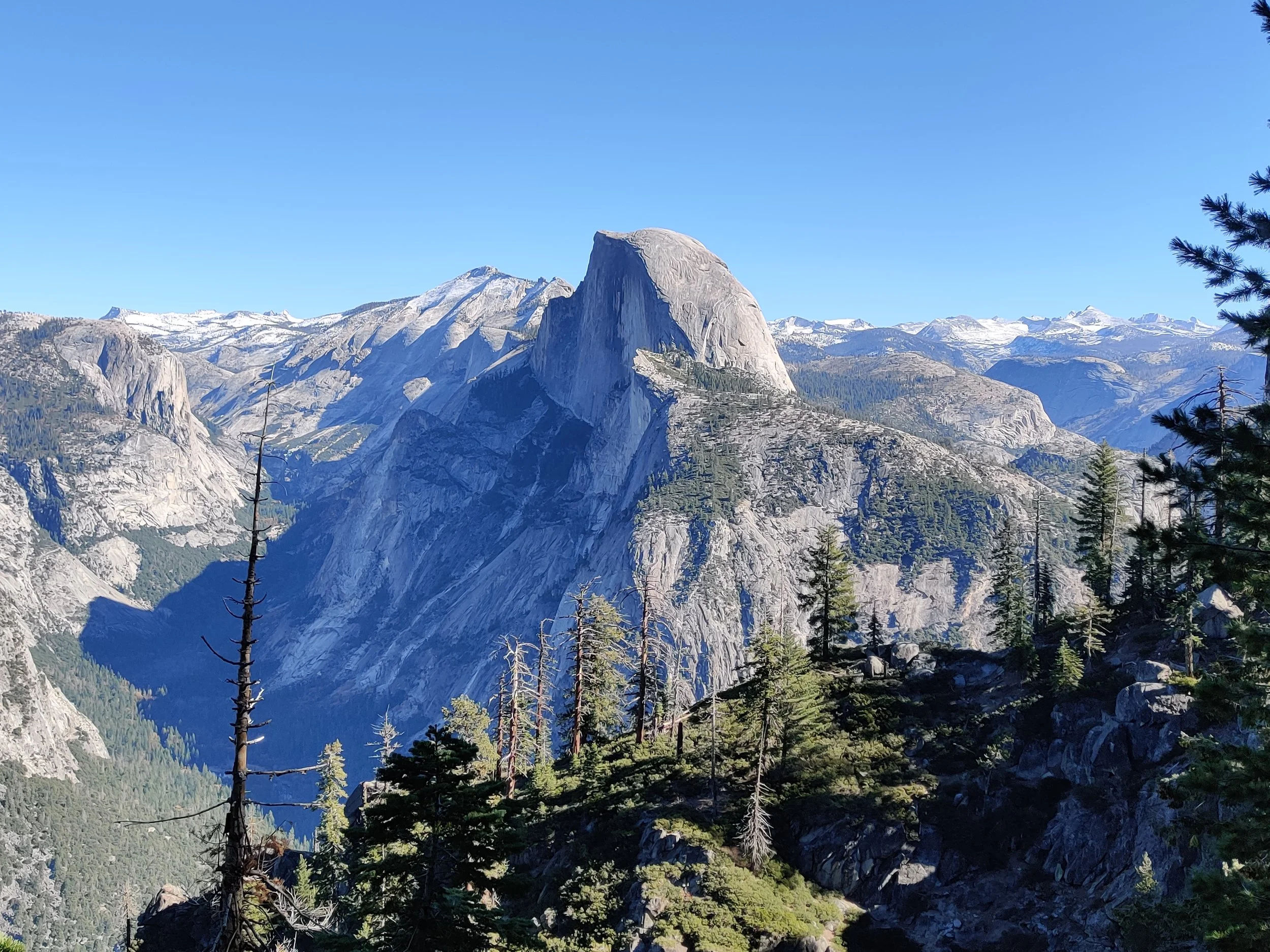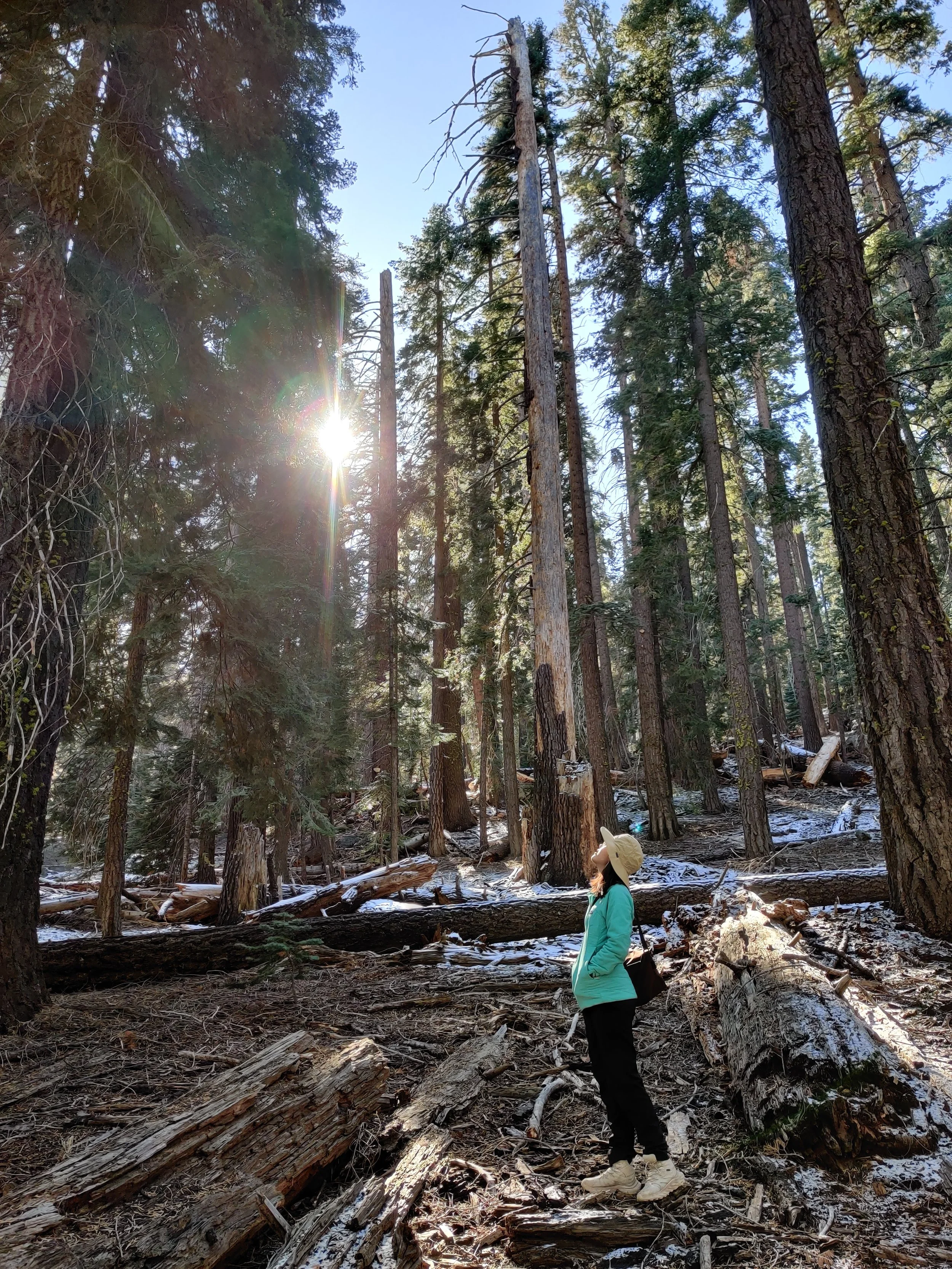California National Parks Road Trip: A 9-Day Fall Adventure Through Sequoia, Yosemite, and Death Valley (Part I)
Yosemite Valley in Fall
A fellow traveler once told me: if you want to see amazing cities, go to Europe. If you want to see stunning landscapes, head to the USA. Many American cities aren't visitor friendly, given their car-dependent nature and lack of public transport. However, renting your own set of wheels gives you the freedom to explore the country's spectacular natural wonders.
While you could easily stretch this itinerary to explore California’s national parks at a more leisurely pace, this 9-day journey through three iconic parks delivers maximum impact for those of us with limited vacation time.
Why Visit California National Parks in Fall
The biggest advantage to visiting parks during shoulder season is fewer people, and our autumn timing proved perfect for experiencing Sequoia's majestic giant trees, Yosemite's legendary landscapes in fall colours, and Death Valley's stunning desert expanse in comfortable temperatures. We avoided summer's extreme crowds and heat.
Transportation and Logistics
We flew into LAX (Los Angeles International Airport), though this itinerary works equally well from San Francisco International Airport, which has recently been refurbished and offers excellent facilities.Sequoia & Kings Canyon National park is a five-hour drive from either LAX or SFO, while Yosemite is closer to SFO, around four hours away.
Planning note: We highly recommend a rental car. Public transport near these parks ranges from slow and sporadic to completely non-existent. We used Turo, an Airbnb-style car rental service. Ensure you have proper insurance coverage before using peer-to-peer rental services.
Public Transportation Options in Parks
Yosemite National Park offers a shuttle service that loops around the valley during peak season, allowing you to park outside and explore without the hassle of finding parking spots or queuing at gates each morning.
Sequoia National Park runs shuttles during peak season (though these don't cover Kings Canyon), while Death Valley offers tours but no public transport options.
Important: Visiting Yosemite during summer peak months requires advance permit registration, so plan accordingly. We used the ”America The Beautiful” pass to gain entry into Sequoia and Yosemite, but Death Valley appears to be free for visitor entry.
Days 1-3: Sequoia & Kings Canyon National Park
The General Sherman Tree
The Giant Sequoias
Nothing prepared you for your first encounter with these giants—the most massive living beings on our planet, some over 3,000 years old. While coastal redwoods in Northern California may be taller, sequoias dominate in sheer mass and volume. These remarkable trees are endemic to a narrow strip of the Sierra Nevada mountains and have evolved fascinating fire adaptations, including bark up to one meter thick and cones that only release seeds when triggered by seasonal fires.
General Sherman Tree and Congress Trail
Our first stop was the legendary General Sherman tree, the largest tree and largest living organism in the world. After parking at the Sherman Tree trailhead, we walked through the serene temperate coniferous forest to reach this natural wonder. Walking the adjacent Congress Trail brought us to other magnificent specimens, including the McKinley Tree, the President Tree, and the Senate—a stunning grove of seven to eight giant sequoias clustered together.
The House, another Sequoia grove near the Senate
Words cannot adequately describe the majesty of these ancient beings and the history they've witnessed, from the age of the Egyptians until today. The trail remains quite accessible and flat, suitable even for visitors who struggle with long distances or uneven terrain. For those of us trapped in corporate jobs, I highly recommend practicing looking up in advance to reactivate that unused range of motion in your neck before visiting.
Tunnel Log and Moro Rock
After our forest walk, we visited the park's most mainstream attraction—Tunnel Log, where most cars can pass through the hollowed trunk for memorable photos. I wouldn't recommend this area during peak season, as narrow roads and photo-seeking vehicles create inevitable traffic jams.
Moro Rock provided a perfect sunset to end the day—a short but steep scramble up a giant stone monolith along a well-maintained trail. Watching golden hour rays spill across the valley, a kilometer deep and four kilometers wide, was a truly soul-stirring experience.
Sunset views from Moro Rock
Alpine Lakes Adventure
Our final park day featured a challenging 12-kilometer hike from the Tokopah Falls trailhead to a series of emerald alpine lakes at 3,200 meters above sea level. Shoulder season meant we encountered fewer than ten people along the entire trail, occasionally pausing our walk to a stunning, ear-piercing silence.
Emerald Lake, with Alta Peak visible in the background
Tip: Fall visits offer only narrow windows when lakes catch optimal sunlight to produce those shimmering emerald reflections. Time your hike to reach the summit around midday, for lunch at a beautiful spot before heading down. More adventurous hikers can tackle the nearby Alta Peak trail, which offers majestic views across neighboring valleys. Remember that fall means earlier sunsets, always aim to reach shelter well before sunset.
Hiking through the pine forests and Sequoia trees
Sequoia and Kings Canyon offer numerous other trails with varying difficulty levels. Unfortunately, road closures prevented us from visiting the Kings Canyon section during our visit, but several days could easily be filled with rejuvenating walks through the forests and mountains.
Accommodation: Due to high in-park accommodation costs, we stayed at an Airbnb in Clingans Junction, about 1.5 hours outside the park.
Pro tip: Book Boyden Cavern visits in advance, as it's the only activity in Sequoia requiring advance reservations.
Essential Planning Resources
After our awe-inspiring experience among Sequoia's ancient giants, we spent the better part of the day driving through magnificent mountain scenery toward Yosemite National Park. For those just joining our California national parks road trip, this is the second stop on our epic 9-day fall adventure through three of the state's most spectacular parks.
Days 4-6: Yosemite National Park - Nature's Cathedral
First Impressions at Tunnel View
Tunnel view
Yosemite is the absolute master of first impressions. After driving through a long tunnel, you emerge at the famous Tunnel View parking area, facing one of the most unforgettable vistas in North America: Yosemite Valley spread before you with the towering El Capitan massif standing sentinel. The granite cliffs, cascading waterfalls, and lush valley floor create a perfect postcard moment that somehow exceeds your wildest expectations.
This viewpoint became our daily ritual. We stopped here every morning on our way into the park, and the scene never lost its ability to take our breath away.
Navigating Yosemite Valley
El Capitán
Driving around the valley requires some awareness of the unique traffic flow. Due to slow-moving vehicles filled with gawking tourists (ourselves included), most valley roads have been converted to two-lane, one-way roads to allow overtaking. Pay attention at junctions—a wrong turn could send you on a 15-minute loop around the entire valley.
The valley offers numerous viewpoints, each showcasing different perspectives of this geological masterpiece. We discovered that timing is everything; early morning light illuminates the eastern faces while late afternoon brings drama to the western-facing cliffs.
The Mist Trail Adventure: Vernal and Nevada Falls
Vernal Falls
Our first major hike began at the Mist Trail trailhead at the valley's eastern end. This spectacular trail took us approximately 4.5 hours at a relaxed pace, leading to the stunning Vernal Falls and then Nevada Falls. The trail lives up to its name—prepare to get thoroughly soaked from the waterfall mist, especially during spring and early summer.
Nevada Falls
At Nevada Falls, we discovered a perfect lunch spot on the wide, sloping rock face where you can sit and eat while Half Dome looms majestically overhead. The trail continues beyond this point toward several destinations, most notably the famous Half Dome cables. However, hiking Half Dome is a serious undertaking requiring permits, proper preparation, and excellent physical conditioning.
Practical tip: We parked at the Yosemite Valley trailhead parking area, though it's also possible to walk over from Curry Village.
An unexpected gem: The Four Mile Trail
The weather then threw a spanner into our second day plans. We'd originally planned to drive up Tioga Road for hiking and lunch beside the pristine Tenaya Lake. Unfortunately, the early first snow caught up with us, and the road was closed for the remainder of the season—a shoulder season travel risk. The roads to Glacier Point were also closed, limiting our car-based options to the valley floor.
Feeling adventurous, we decided to tackle the legendary Four Mile Trail and its daunting 1,000-meter elevation gain.
Standing at the base of the massive granite wall, we gazed up at one vertical kilometer of rock stretching skyward. The Four Mile Trail ranks as one of the top day hikes beginning from Yosemite Valley, climbing 3,200 feet from the valley floor to Yosemite's most famous viewpoint.
After a quick prayer and some mental preparation, we began our ascent. What unfolded was the most incredible, beautiful hike of our entire trip. The trail follows a gentle but constant incline with occasional vistas across the valley toward Yosemite Falls, which appeared frozen from the previous night's chill.
View of Yosemite Valley on the way up the Four-Mile trail
The Four Mile Trail follows a series of switchbacks up the south wall of Yosemite Valley, offering awe-inspiring views throughout the climb. Around each switchback, new vistas opened up. Looking westward down the valley, we could see the entire granite cathedral framed by Cathedral Rock on the left and El Capitan on the right. After approximately 2.5 hours of steady climbing, we reached our destination—Glacier Point.
Having Glacier Point to Ourselves
Because the access road was closed for the season, we had Glacier Point entirely to ourselves— something only experienced by a privileged few. We spent several minutes choosing the prime-mest spot to sit and consume our well-earned lunch.
Lunchtime view of half-dome
From this vantage point, we stared at Half Dome eye-to-eye, seeing how this iconic granite dome rises above the surrounding landscape of massive rock edifices stretching in every direction. We'd brought a small bottle of wine to celebrate completing this challenging ascent, and few moments in life have felt sweeter.
Exploring Sentinel Dome
With energy remaining, we ventured over to Sentinel Dome for a different perspective of the valley. The 360-degree views from this granite dome provide yet another angle on Yosemite's majesty. Unfortunately, limited daylight prevented us from reaching Taft Point, which would have offered another amazing valley vista, so we began our descent back to the valley floor.
The panorama from Sentinel Dome
This day truly epitomized what makes Yosemite special—the combination of physical challenge, natural beauty, and the profound sense of accomplishment that comes from earning these incredible views through your own effort.
Pro Tips for Visiting Glacier Point Viewpoints
All the viewpoints on Yosemite Valley's southern rim—Taft Point, Sentinel Point, and Glacier Point—are typically accessible by car and a short walk. I highly recommend making these part of your Yosemite visit, whether you drive or hike up as we did.
The Long Drive to Death Valley
With Tioga Pass Road closed, our originally planned 7-hour drive to Death Valley stretched to nearly 10 hours. We spent our final Yosemite day on this long but beautiful journey, watching landscapes transform from Yosemite's forests, rivers, and granite peaks to the vast desert expanses of Death Valley, California.
The changing scenery provided a perfect transition between these dramatically different ecosystems, reminding us of California's incredible geological diversity.
Next up: Desert adventures, the lowest point in North America, and some of the most unique geological formations you'll ever encounter.
This concludes Part 1 of our California National Parks adventure. Join us for Part 2, where we'll explore the otherworldly landscapes of Death Valley National Park, including the rare mirror lake phenomenon at Badwater Basin and the ethereal beauty of desert sunrises and sunsets.
